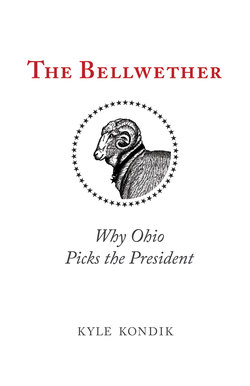Читать книгу The Bellwether - Kyle Kondik - Страница 9
На сайте Литреса книга снята с продажи.
ОглавлениеINTRODUCTION
In their influential 1970 book The Real Majority, political demographers Richard Scammon and Ben Wattenberg identified the individual they saw as the American “Middle Voter.” This person was a metropolitan “middle-aged, middle-income, middle-educated, Protestant, in a family whose working members work more likely with hands than abstractly with head.” They then drilled down a little deeper: “Middle Voter is a forty-seven-year-old housewife from the outskirts of Dayton, Ohio, whose husband is a machinist.”1 Scammon and Wattenberg did not actually have a specific person in mind. Their description of Middle Voter was an archetype, but after the book was published, Wattenberg said, “I do not know for sure if the lady exists. But I suspect that if you looked hard enough, you’d find her.”
And look the Dayton Journal Herald did. With the help of the International Association of Machinists, their investigation found then 46-year-old Bette Lowrey of Fairborn, a Dayton suburb located in Greene County.2 Fairborn abuts Wright-Patterson Air Force Base and is the home of Wright State University, where one of the 2016 presidential debates was scheduled to be held. Life magazine profiled Lowrey. “She takes her sudden fame as Middle Voter very seriously,” adding that she was “a registered Democrat who sometimes splits her ticket,” and “is ‘actually annoyed’ by most politicians.” “It’s almost like being elected,” Lowrey said of her status as the average American voter. “I must remember I’m speaking not only for myself.”3
Every four years, Ohio voters end up speaking for more than just themselves, whether they realize it or not. While Ohio is not always or even often the single state that decides who becomes president of the United States, its consistent presence near the average national voting has cemented its reputation as one of the key states in presidential politics. Exploring Ohio’s long history as a bellwether of the national electorate is the goal of this book.
Chapter 1 describes what exactly a bellwether state is, as compared with other terms, like “swing state,” that the national press uses to describe key states in the Electoral College. It explores how the declining number of competitive states in close national elections has made the ones that remain, like Ohio, so important in 21st-century presidential contests.
Chapter 2 compares Ohio’s record in the last 30 presidential contests to those of the other 49 states and finds that Ohio’s overall record of voting for the presidential winner is the best, that Ohio is consistently closest to the national popular vote total, and that Ohio has provided the decisive electoral votes to the winners more often than any other state. After establishing that record, it’s natural, then, to ask what is so special about Ohio, the subject of chapter 3.
This book’s subtitle, Why Ohio Picks the President, can be read in two ways. The first is that Ohio voters actively select the candidate who is elected. In effect, Ohio decides the election. That does happen from time to time, and the state has found itself closer to the national average voting more often than any other state. But there is another, more passive, way to read it. The nation selects the president, and because Ohio has for so long mimicked the nation, the Buckeye State goes along for the ride. What’s perhaps special about Ohio, then, is that it’s not special at all.
The Bellwether’s middle chapters describe Ohio’s political evolution from 1896 through 2012. Chapter 4 deals with the state’s pre–New Deal voting record, which bears a striking resemblance to patterns dating back to the Civil War. Chapter 5 begins with the state’s New Deal realignment, which really appears not in Franklin Roosevelt’s first election in 1932 but in his 1936 campaign, an election that reoriented Ohio’s presidential voting closer to the national average after it drifted fairly heavily to the Republicans. This chapter also chronicles the failed efforts by two prominent Ohioans, John W. Bricker and Robert A. Taft, to be a part of a winning national ticket, as well as Richard Nixon’s long history of electoral success in Ohio.
Chapter 6 brings Ohio’s presidential voting into the 21st century, while chapter 7 provides an in-depth look at Ohio’s county-level voting and explores whether this bellwether state has a bellwether county. It also serves as an atlas of sorts of where the state’s true centers of Republican and Democratic strength lie.
The conclusion offers some closing thoughts about the state’s prospects as a reflection of the nation’s presidential voting and explores how the state does or does not benefit from its place in the political spotlight every four years.
This book was written in advance of the 2016 election, when Ohio seemed yet again poised to play a major role in what could be another very competitive presidential election. But just because Ohio has been a bellwether for so long does not guarantee that it will vote for the winner in the future.
After all, Middle Voter and Ohioan Bette Lowrey looked like the exemplar of the American electorate in 1970. Yet in 1972, she voted for George McGovern, one of the biggest landslide losers in American presidential history. Ohio has spent the last 30 presidential elections, and others before that, generally voting close to the national average. But there’s no guarantee that it will continue to do so, even while there’s little indication that the quintessential bellwether is breaking away from the flock.
